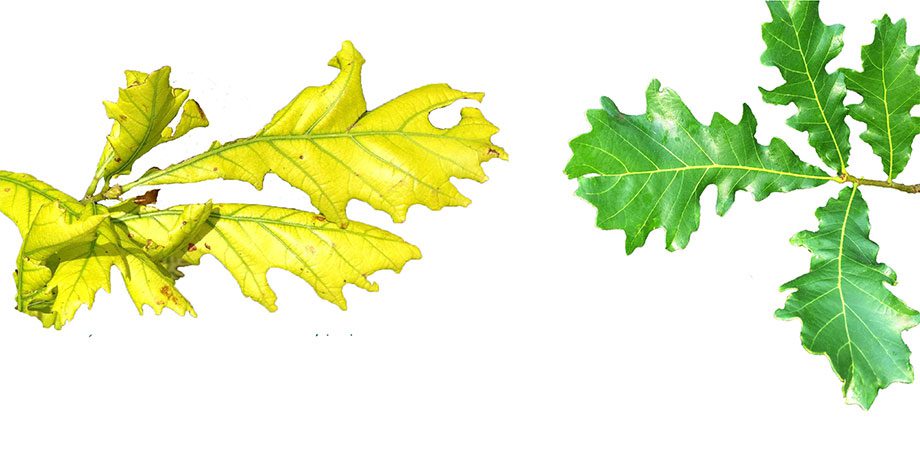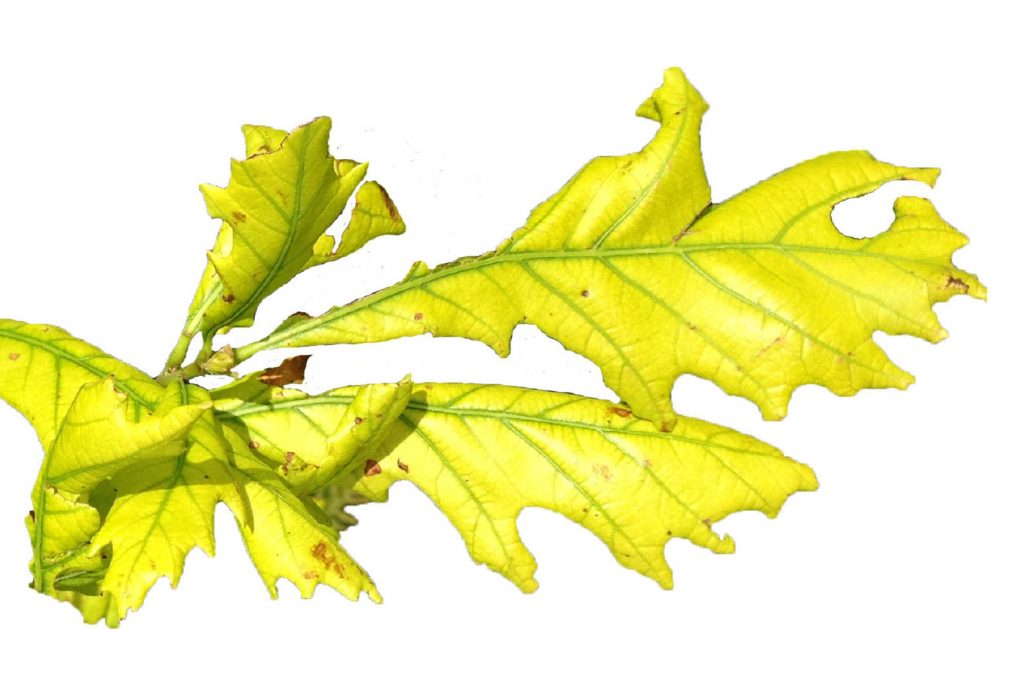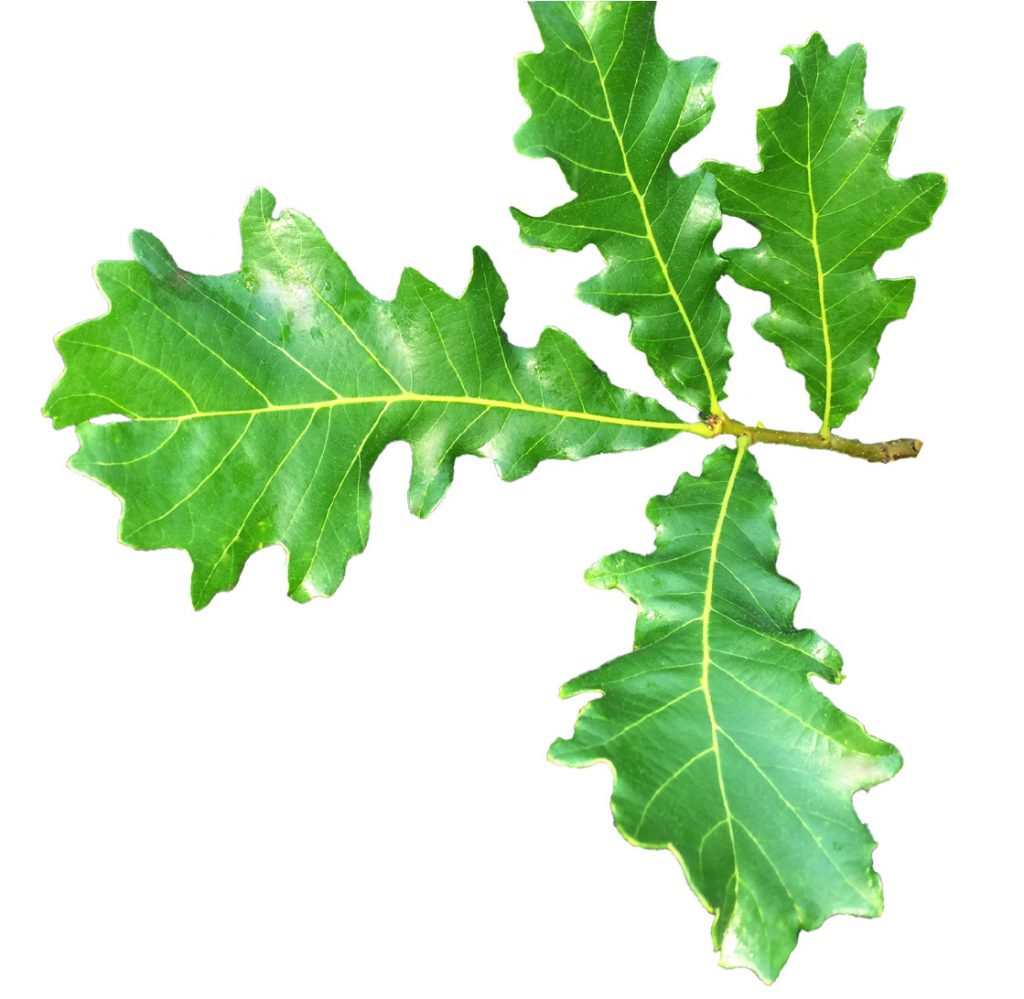Chlorosis: A Major Issue For Landscape Trees And Plants

It’s an exciting time of the year—temperatures are increasing, birds are coming back north, and trees are thinking about producing leaves. For some trees though, producing leaves with a normal level of chlorophyll (the pigment that gives leaves their green color) can be very difficult. We have two things to blame: soil pH and plant genetics.
So why does pH and genetics matter? Iron and manganese (among other elements) are the two important elements that must be present for chlorophyll production. Both of these elements readily share electrons and precipitate in the soil when the soil pH increases above 6.5, which makes both iron and manganese unavailable for uptake by the plant. Some trees/shrubs can release the appropriate amount of organic acids at their root sites to drop the pH, which solubizes the iron and manganese and allows them to be taken up by the plant.
Unfortunately, many of our more common landscape plants—red maples, pin oaks, river birches—are not genetically set up to release the amount (and type) of organic acids necessary to take up iron and manganese in soil pH situations above 6.5. In fact, many common trees/shrubs we like to plant in the landscape are actually genetically adapted to grow in lower soil-pH settings. Also, in areas where glaciers have passed through, the native soil pH is already above 7 and many trees/shrubs have been planted in subdivisions where the higher-pH subsoil is often left on top of the ground. The higher soil pH in these situations would also keep the plant from taking up iron and manganese. Failing to address this chronic lack of iron and manganese will result in leaves with a lower amount of chlorophyll, and in the long term, will lead to cell death and increased the probability of attacks from insects and fungi/bacteria.
What’s the answer? Foliar-Pak’s Chloroburst L has both iron and manganese in chelated, plant-available forms that will not interact with the soil pH—even in soil pH’s up to 10! You can be confident that the plant will take up the iron and manganese you put down with Chloroburst L. Simpler forms of iron and manganese (sulfates, citrates, lignosulfonates, glucoheptonates, etc.) will not be available to the plant and will precipitate out into the soil. As an added bonus, Chloroburst L also includes zinc, which is important for growth at a plant’s roots and shoots. Most of our soils in the Midwest are deficient in zinc as it is, so including a protected form of zinc will translate to an increased growth in the roots and shoots of the plants.
Once Chloroburst L is applied (please see label), it will typically take about 6 weeks for the plant to build chlorophyll pigments in the old leaves. As the season progresses, the level of green will continue to build—even at the end of the season. This suggests the treatment could last for two years.


George Murray
President, EnP Investments, LLC







